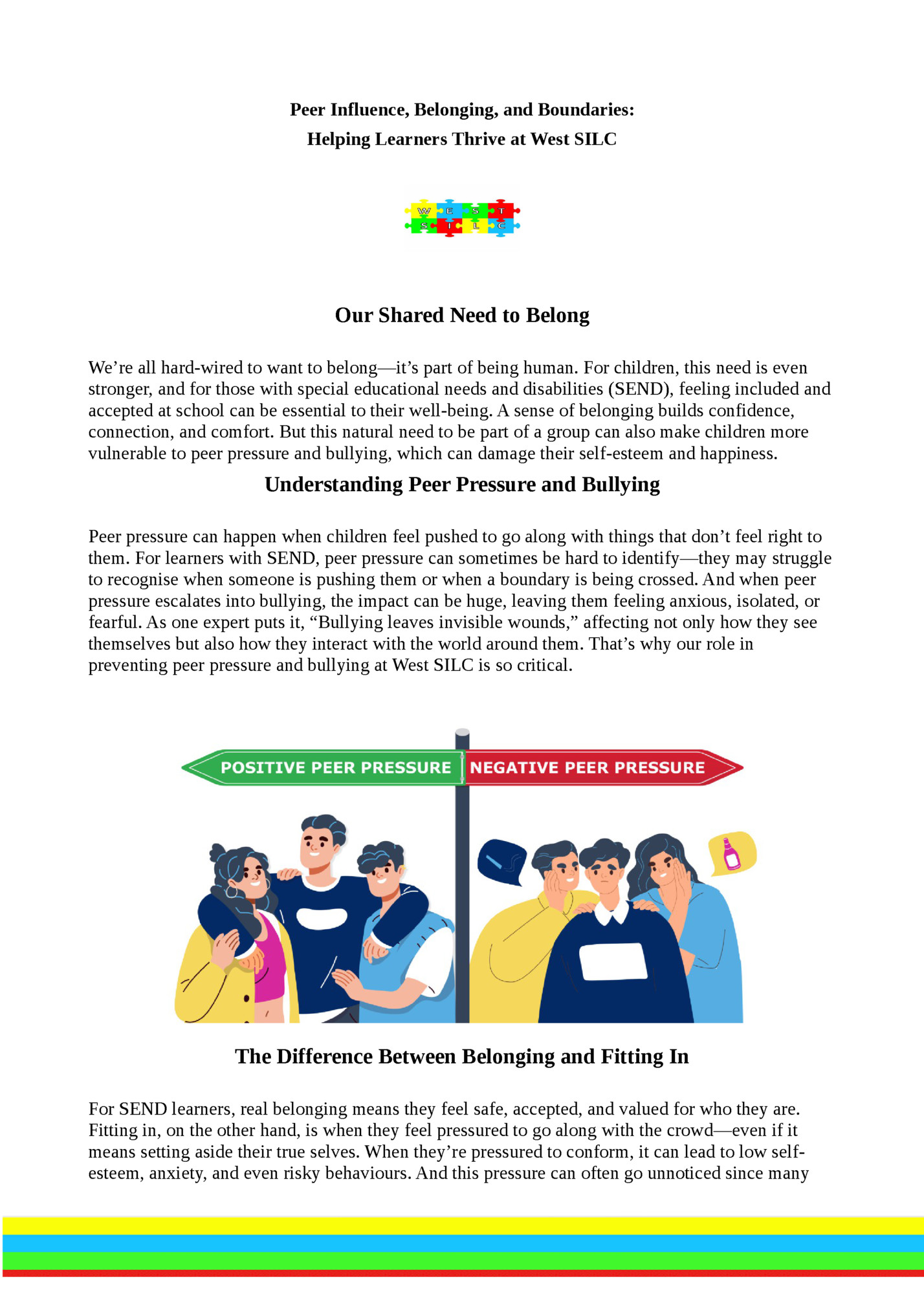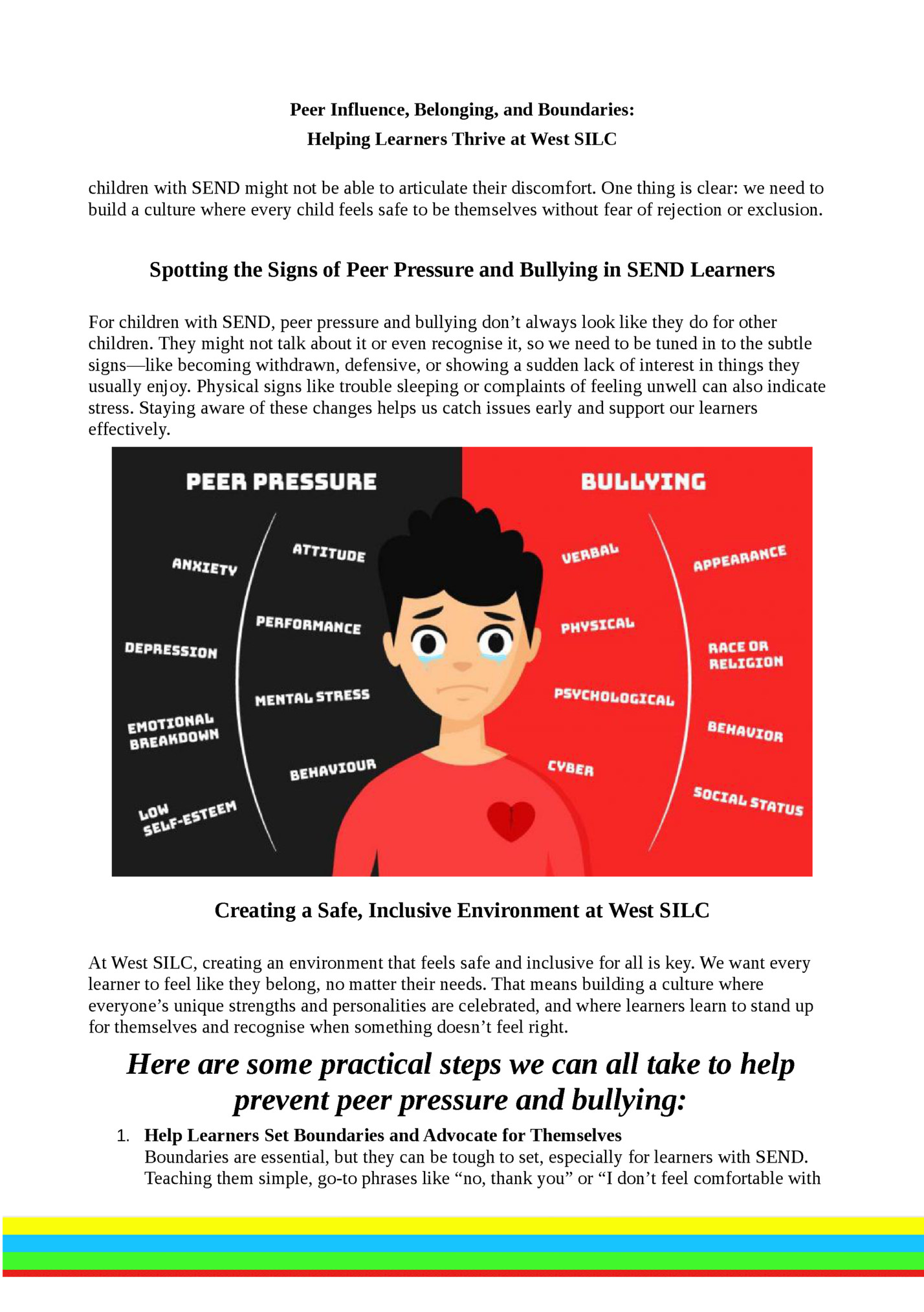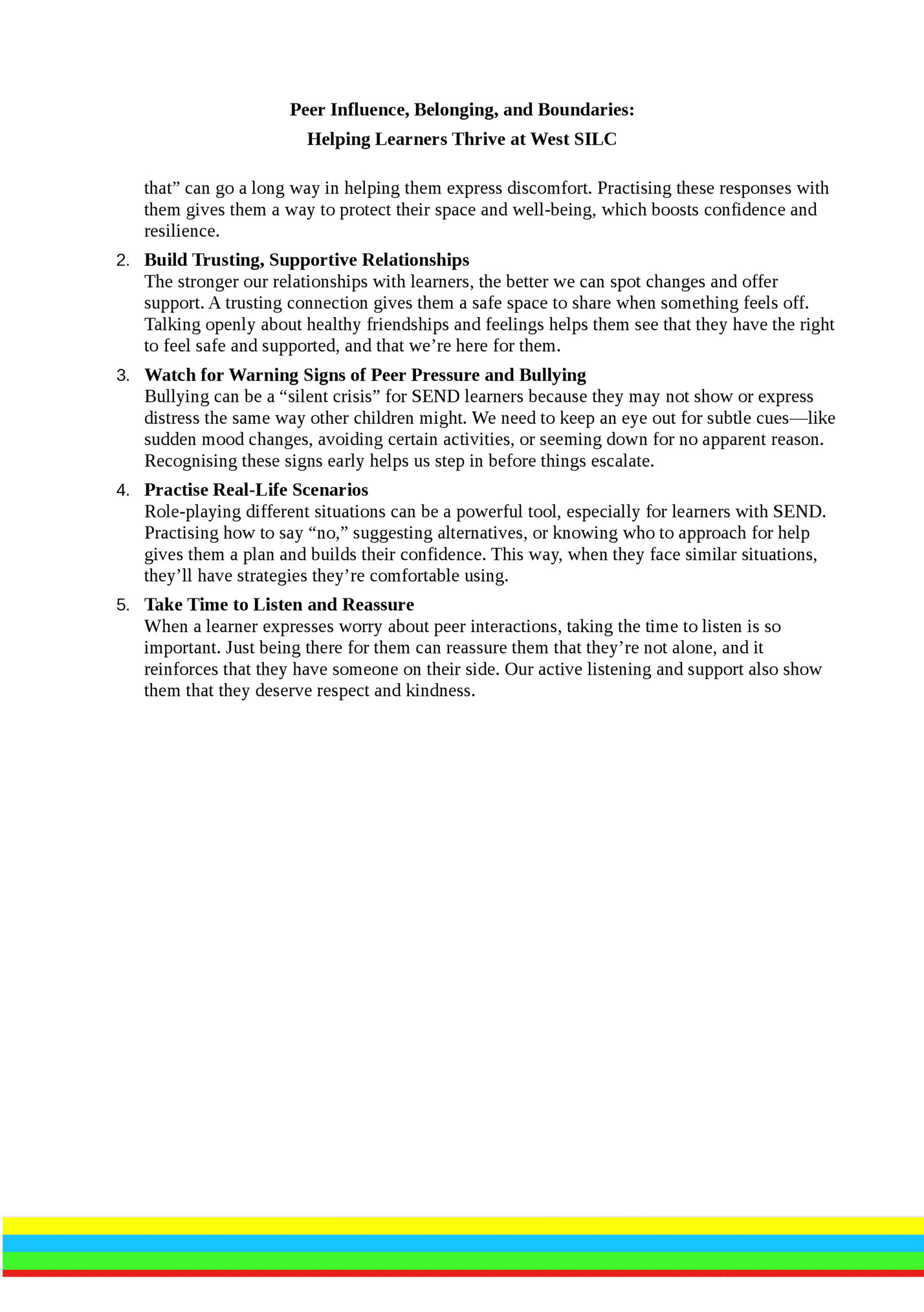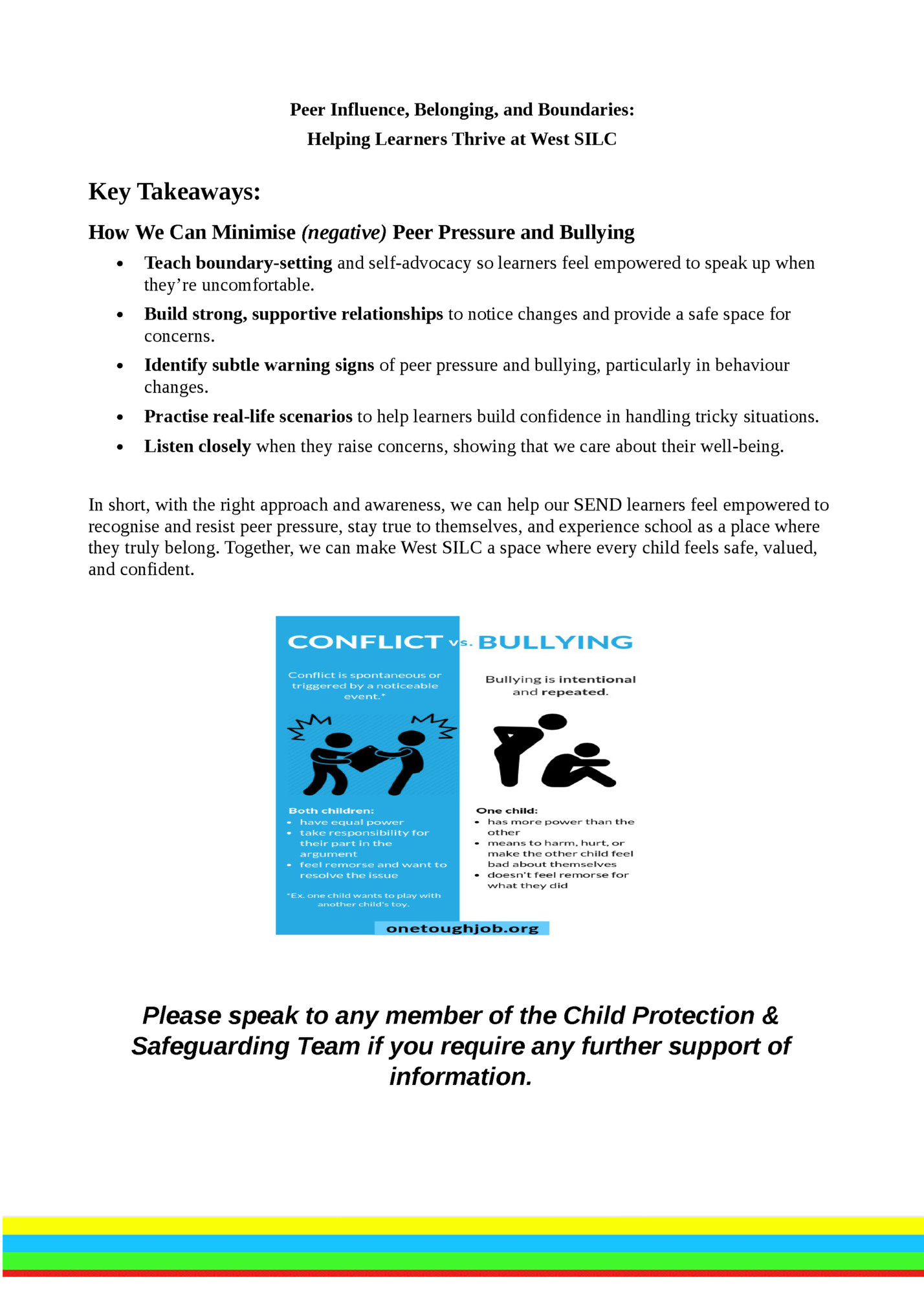Helping Learners Thrive at West SILC Our Shared Need to Belong We’re all hard-wired to want to belong—it’s part of being human. For children, this need is even stronger, and for those with special educational needs and disabilities (SEND), feeling included and accepted at school can be essential to their well-being. A sense of belonging builds confidence, connection, and comfort. But this natural need to be part of a group can also make children more vulnerable to peer pressure and bullying, which can damage their self-esteem and happiness. Understanding Peer Pressure and Bullying Peer pressure can happen when children feel pushed to go along with things that don’t feel right to them. For learners with SEND, peer pressure can sometimes be hard to identify—they may struggle to recognise when someone is pushing them or when a boundary is being crossed. And when peer pressure escalates into bullying, the impact can be huge, leaving them feeling anxious, isolated, or fearful. As one expert puts it, “Bullying leaves invisible wounds,” affecting not only how they see themselves but also how they interact with the world around them. That’s why our role in preventing peer pressure and bullying at West SILC is so critical. The Difference Between Belonging and Fitting In For SEND learners, real belonging means they feel safe, accepted, and valued for who they are. Fitting in, on the other hand, is when they feel pressured to go along with the crowd—even if it means setting aside their true selves. When they’re pressured to conform, it can lead to low selfesteem, anxiety, and even risky behaviours. And this pressure can often go unnoticed since many

Helping Learners Thrive at West SILC children with SEND might not be able to articulate their discomfort. One thing is clear: we need to build a culture where every child feels safe to be themselves without fear of rejection or exclusion. Spotting the Signs of Peer Pressure and Bullying in SEND Learners For children with SEND, peer pressure and bullying don’t always look like they do for other children. They might not talk about it or even recognise it, so we need to be tuned in to the subtle signs—like becoming withdrawn, defensive, or showing a sudden lack of interest in things they usually enjoy. Physical signs like trouble sleeping or complaints of feeling unwell can also indicate stress. Staying aware of these changes helps us catch issues early and support our learners effectively. Creating a Safe, Inclusive Environment at West SILC At West SILC, creating an environment that feels safe and inclusive for all is key. We want every learner to feel like they belong, no matter their needs. That means building a culture where everyone’s unique strengths and personalities are celebrated, and where learners learn to stand up for themselves and recognise when something doesn’t feel right. Here are some practical steps we can all take to help prevent peer pressure and bullying: 1. Help Learners Set Boundaries and Advocate for Themselves Boundaries are essential, but they can be tough to set, especially for learners with SEND. Teaching them simple, go-to phrases like “no, thank you” or “I don’t feel comfortable with

Helping Learners Thrive at West SILC that” can go a long way in helping them express discomfort. Practising these responses with them gives them a way to protect their space and well-being, which boosts confidence and resilience. 2. Build Trusting, Supportive Relationships The stronger our relationships with learners, the better we can spot changes and offer support. A trusting connection gives them a safe space to share when something feels off. Talking openly about healthy friendships and feelings helps them see that they have the right to feel safe and supported, and that we’re here for them. 3. Watch for Warning Signs of Peer Pressure and Bullying Bullying can be a “silent crisis” for SEND learners because they may not show or express distress the same way other children might. We need to keep an eye out for subtle cues—like sudden mood changes, avoiding certain activities, or seeming down for no apparent reason. Recognising these signs early helps us step in before things escalate. 4. Practise Real-Life Scenarios Role-playing different situations can be a powerful tool, especially for learners with SEND. Practising how to say “no,” suggesting alternatives, or knowing who to approach for help gives them a plan and builds their confidence. This way, when they face similar situations, they’ll have strategies they’re comfortable using. 5. Take Time to Listen and Reassure When a learner expresses worry about peer interactions, taking the time to listen is so important. Just being there for them can reassure them that they’re not alone, and it reinforces that they have someone on their side. Our active listening and support also show them that they deserve respect and kindness.

Helping Learners Thrive at West SILC Key Takeaways: How We Can Minimise (negative) Peer Pressure and Bullying • Teach boundary-setting and self-advocacy so learners feel empowered to speak up when they’re uncomfortable. • Build strong, supportive relationships to notice changes and provide a safe space for concerns. • Identify subtle warning signs of peer pressure and bullying, particularly in behaviour changes. • Practise real-life scenarios to help learners build confidence in handling tricky situations. • Listen closely when they raise concerns, showing that we care about their well-being. In short, with the right approach and awareness, we can help our SEND learners feel empowered to recognise and resist peer pressure, stay true to themselves, and experience school as a place where they truly belong. Together, we can make West SILC a space where every child feels safe, valued, and confident. Please speak to any member of the Child Protection & Safeguarding Team if you require any further support of information.

Fleepit Digital © 2021